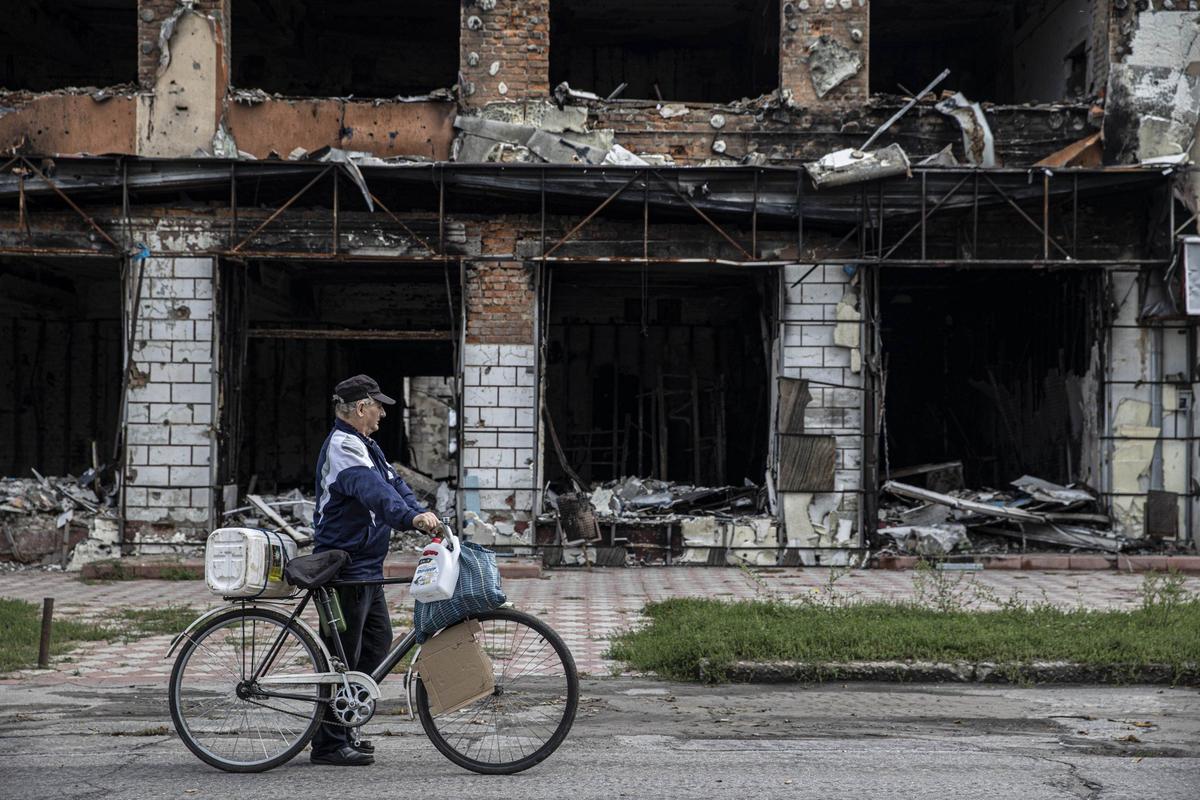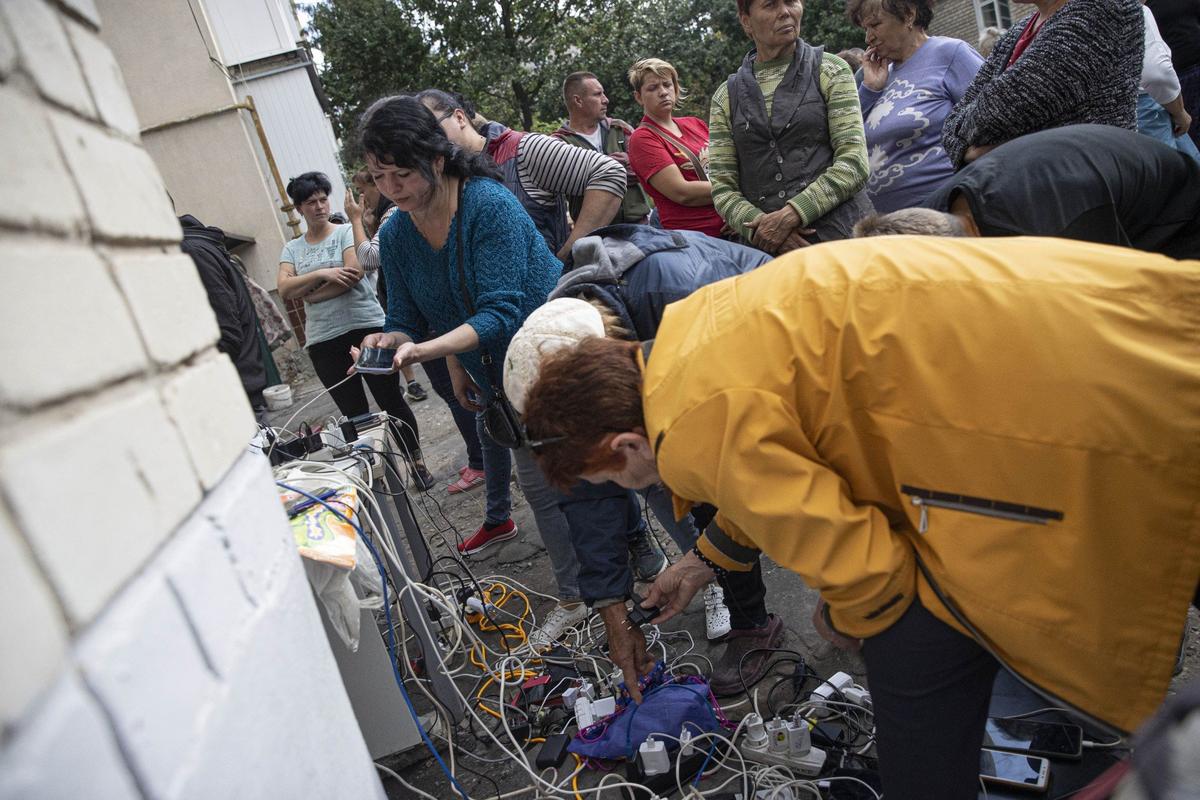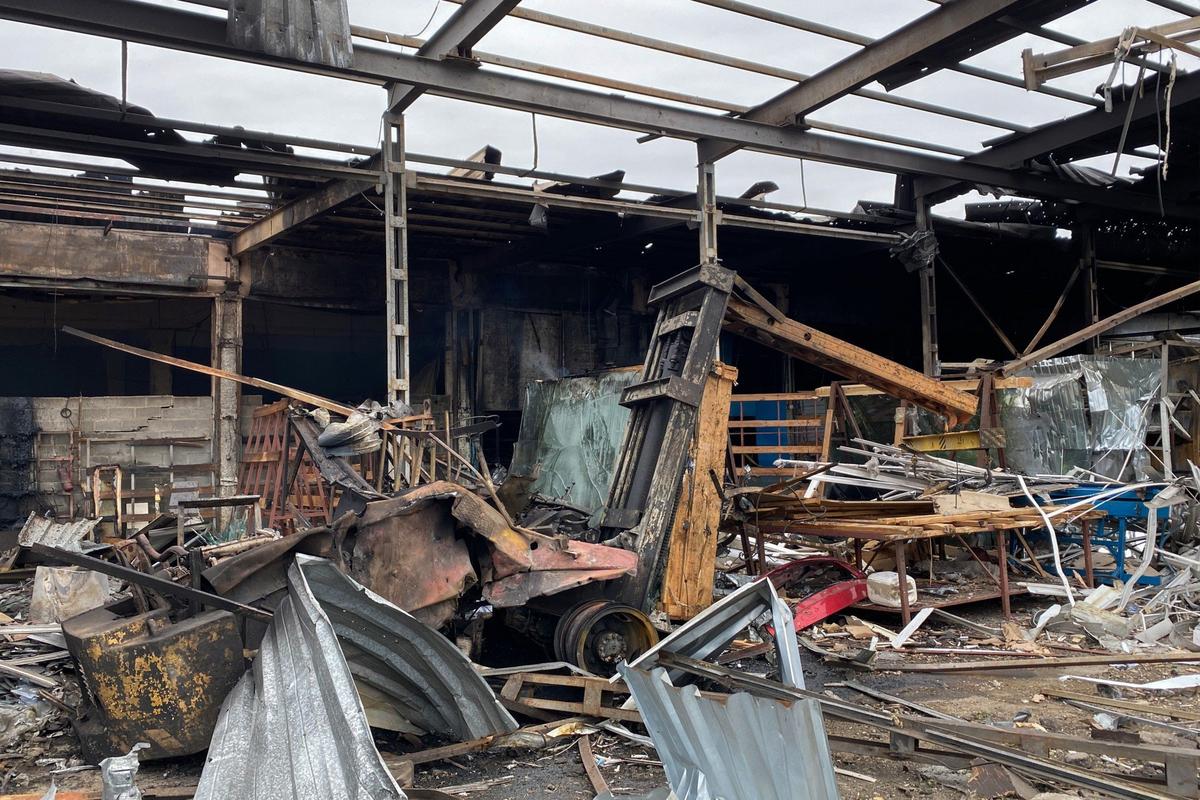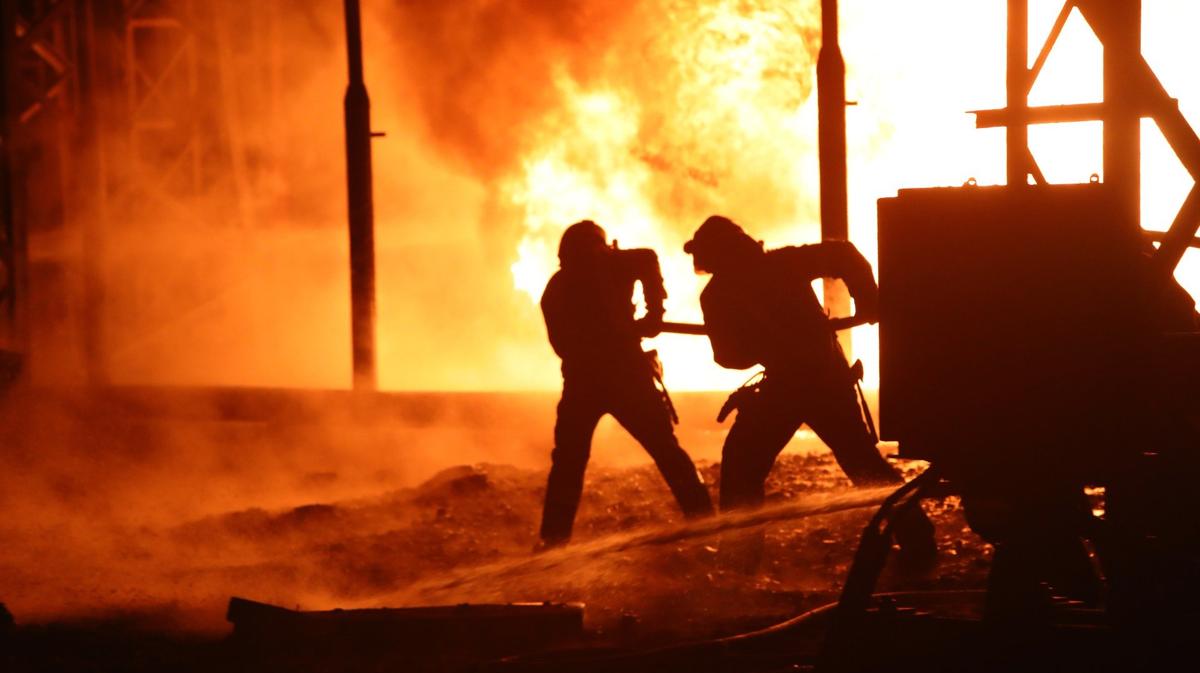Russia has started to shell Ukraine’s critical infrastructure more intensively as response to the successful Kharkiv counteroffensive. Strikes targeting Ukraine’s power grid have caused partial or full blackout in the regions of Kharkiv, Donetsk, Zaporizhzhia, Dnipro, and Sumy, the country’s President Volodymyr Zelensky says. Many people in those regions now lack water supply, too. Mykhailo Podolyak, adviser to Zelensky, has stated that “direct and deliberate strikes against the critical civilian infrastructure, including the Kharkiv heat and power plant, is with no doubt an act of terrorism which demonstrates Russia’s willingness to leave civilians with no electricity and heating.” The blackout caused the Kharkiv rapid transit system to stop operation and set trolleybuses in Poltava on fire after a voltage swing, Ukraine’s media report. Kharkiv’s mayor Ihor Terekhov also reported that the missile strikes had continued in the following days; the city suffered one more blackout on 12 September when another critical infrastructure facility was targeted by Russia.
“Both Ukraine and the rest of the civilised world can see these acts of terrorism even through this impenetrable darkness,” Zelensky said. “Those were deliberate and cynical missile strikes against our civilian infrastructure, and not at all military facilities.”
Seven Russian missiles destroyed a hydraulic power station and a dam in the city of Kryvyi Rih on 14 September, as per Kyrylo Tymoshenko, Deputy Head of Zelensky’s Office, which caused the water level in the Inhulets River to rise by 1 to 2 metres, flooding residential areas.
A catastrophic menace
International practice defines critical infrastructure as facilities that are essential for the functioning of a society and economy, namely, power, water supply and drainage facilities, as well as transportation ones. In wintertime, heating facilities are also included. Destroying heating and water supply facilities may cripple the city’s daily living activities for a long time. Even one day with no electricity, water supply, and drainage is enough to cause a humanitarian catastrophe in huge settlements where people mainly reside in multi-storey buildings.
“Russia started shelling civilian infrastructure as early as 24 February,” Anton Pustovalov, a journalist and historian who started collecting evidence of Russia’s war crimes in Ukraine when the war started has told Novaya Gazeta Europe. “Telephone links and communications were their top priority. The most notable act in this regard was the hit of a TV Tower in Kyiv’s Babyn Yar in early March. They started shelling rail junctions, railway stations and even trains with refugees in the same period.

Photo: Metin Aktas / Anadolu Agency / Getty Images
Pustovalov says Russia used single missiles only during the first phase of each assault and added mortars and rocket launchers as they were nearing a settlement. “Such attacks can be divided into two categories: deliberate strikes against civilian infrastructure and missile hits of residential areas; the latter normally happened when missiles missed their true targets or were taken down above residential buildings,” Pustovalov continues. “The exceptions were obvious acts of intimidation such as the Serhiivka missile strike or the one that hit a parking lot in Kyiv when Russian journalist Oksana Baulina was among the victims.”
Russia’s new potential atrocities were no secret: Western intelligence agencies reported that Russia would intensify its attacks against the civilian infrastructure multiple times in late August. “We have information that Russia is stepping up efforts to launch strikes against Ukraine’s civilian infrastructure and government facilities in the coming days. Given Russia’s track record in Ukraine, we are concerned about the continued threat that Russian strikes pose to civilians and civilian infrastructure,” a US official said. Numerous Telegram channels recently reported that Russia’s army was preparing strikes against Ukraine’s hydroelectric power stations and dams on the Dnipro River: “Massive missile strikes are planned against civilian infrastructure in Kremenchuk, Kamyanske, and Zaporizhzhia,” as per Volya. “Vladimir Putin has allowed to use Kh-101 missiles, each capable of carrying up to 500 kg of explosives. If the dams in Kremenchuk and Kamyanske are destroyed, the wave would reach the city of Zaporizhzhia in 4 to 6 hours. In the next 10 to 12 hours the Dnieper Hydroelectric Station would collapse. Such a strike will destroy a significant proportion of civilian infrastructure on the east bank of the Dnipro (the western bank is elevated higher and is not prone to flooding). This will help Russia contain the enemy, forcing Ukraine’s troops to evacuate the locals, and will lead to numerous casualties, both civilian and military. Russia is also planning to accuse Ukraine of this.”
Vengeance upon Ukraine’s civilians
“Strikes against Ukraine’s civilian infrastructure are not only unnecessary from the military viewpoint, but they are also strategically pointless,” an anonymous Russian military expert has told Novaya Gazeta Europe. “Such decision, I believe, must have been approved by the top military brass if not Putin himself. I hear that the General Staff and the FSB tried to dissuade him from doing this as this wouldn’t give Russia’s army any advantage and would only drain the country’s shrinking missile stock.
These missiles could have been used against strategically important targets, such as arsenals, command units, or enemy’s equipment. I believe that this is but an act of vengeance upon Ukraine’s civilians.”
The expert believes that the strikes against Ukraine’s power facilities and transport infrastructure would have been efficient if Ukraine had a solid defence industry as this would cripple its weapon production and limit munitions supply. This, however, would require an enormous amount of resources which Russia currently does not possess. During WW2, the allied aviation executed thousands of air raids on Germany’s territory, dropping millions of bombs and wiping entire cities out, but the weapon factories continued their production.

Izyum residents charge their phones using a diesel generator. 18 September 2022. Photo: Metin Aktas / Anadolu Agency / Getty Images
Moreover, Ukraine never had a defence industry solid enough to supply its military with arms, and many weapon factories were destroyed as early as in spring. Today, most of Ukraine’s military supplies come through the “lend-lease” program and are split into small separate deliveries. Another source of munitions is Russia as its troops abandoned loads of weapons and tanks when they fled. Therefore, there is no point in cutting off Ukraine’s industry from electricity, the expert believes.
“If Putin thinks that leaving Ukrainians with no power supply would turn them against Zelensky, this isn’t going to work either.
Such strikes will make them rally behind their leader even stronger, and they will hate Russia even more.”
The expert believes that the key to understanding why Russia is shelling Ukraine’s power plants is probably behind Zelensky’s recent offer he made to the Western countries which implied exchanging Ukraine’s excess electricity for natural gas. “Putin has been forced to fight a war of attrition and is relying on natural factors now, I believe, as he is planning to commit genocide against Ukrainians by freezing them to death in the wintertime,” the expert says. “This will not, however, provide him a shortcut to victory and will only bring him closer to the prisoner’s dock in the Hague since such actions, as I said, are strategically senseless. All Putin is doing now looks more like thrashing about in impotent rage. Russia’s troops seem to act indifferent. They have orders, they obey those orders, and let their leader make decisions.”
A suicidal act
Ukraine’s authorities and the UN both consider Russia’s missile strikes against civilian infrastructure a crime against humanity, Anton Pustovalov. “What we need to understand is that no legal charges can be served on Russia as Russia calls this conflict a ‘special military operation’, not a war. Some Ukrainian MPs call this genocide. I wouldn’t use the term at this point, however, as the investigation is still on, although there is obviously a grain of truth in what they say.”
It is worth mentioning that Ukraine launches strikes against civilian infrastructure, too. Yevgeny Balitsky, a pro-Russian occupation “official” of the Zaporizhzhia region, says that Ukraine recently used drones to attack hydraulic power units in the area. They have used missiles and drones to attack petroleum storage depots and other facilities in Russia proper, too. Residents of border-straddling regions of Russia also experience blackouts every now and then.

Debris of a burnt-down warehouse in Dnipro, 10 September 2022. Photo: Yana Stoikova / Suspilne Ukraine/JSC “UA:PBC” / Global Images Ukraine / Getty Images
“This topic can be discussed beyond the context of the Ukraine War,” Georgy Bovt, a political scientist, explains. “Strikes upon critical civilian infrastructure are simply a common feature of modern warfare. Remember the NATO bombing of Yugoslavia when bridges, power stations, railways, and signal operations centres were targeted. Some politicians describe such actions as ways to ‘bring their opponent to their knees’ and force them to lay down arms. This is often compared to using mass destruction weapons as it inflicts an enormous amount of damage to the civilian population.”
However, as Bovt says, the history shows that this logic becomes irrelevant at some point in the war. In fact, it works exactly the other way around: after facing an existential threat of such calibre, the victim nation usually unites against their deadly enemy even stronger, defending their country until there are no more soldiers left. The brutality of combat increases accordingly as the defending side becomes more and more enthusiastic. Bovt is certain that wars are won by destroying enemy’s manpower and equipment, and not the drainage systems or power grids.
“Never in human history have massive civilian losses or even wiping out of entire cities led to victory,” he says. “Losses and suffering have never been the key reason to stop combat. Over 50% of Paraguayan civilians were killed between 1865 and 1870 in the Paraguayan War, but the sides kept fighting while they could. During WW2, the Nazi army had no mercy on civilians, bombing settlements every single day. We all remember what happened in Stalingrad and the damage England suffered, for instance. The allies struck back eventually, as the US air forces virtually wiped out the entire city of Dresden, as well as several other cities in Germany and Japan. The Soviet Union had little mercy for the German civilians, too. As a result, 47 out of 70 million people who died during WW2 were civilians. Did this enormous civilian death toll force any of the sides to lay down arms? It did not. Those people were referred to as ‘collateral damage.’”
Using nuclear weapons as the last possible threat is what Bovt calls “a desperate suicidal act” as this would likely force NATO to intervene, causing even bigger escalation of the conflict.
Join us in rebuilding Novaya Gazeta Europe
The Russian government has banned independent media. We were forced to leave our country in order to keep doing our job, telling our readers about what is going on Russia, Ukraine and Europe.
We will continue fighting against warfare and dictatorship. We believe that freedom of speech is the most efficient antidote against tyranny. Support us financially to help us fight for peace and freedom.
By clicking the Support button, you agree to the processing of your personal data.
To cancel a regular donation, please write to [email protected]

